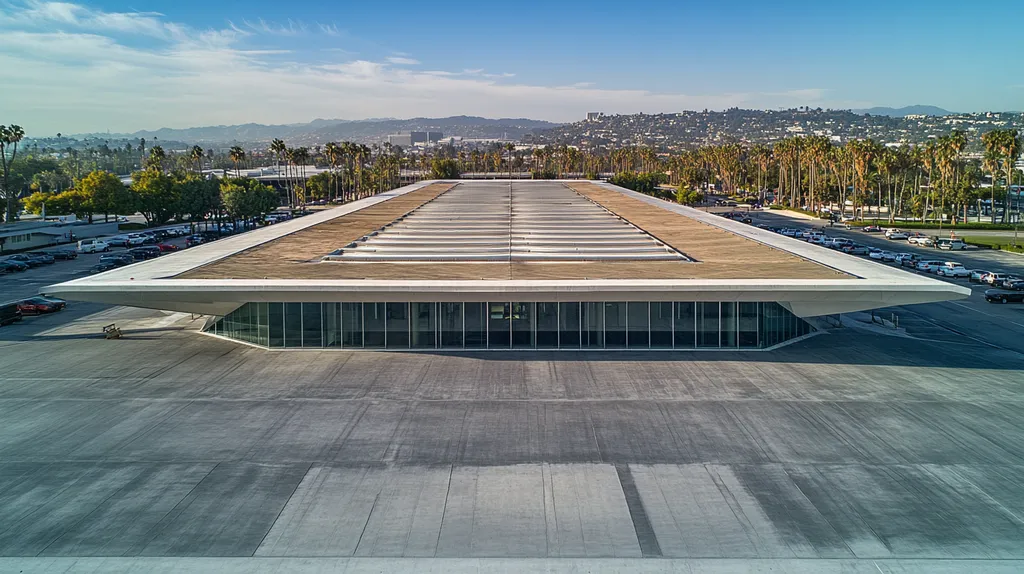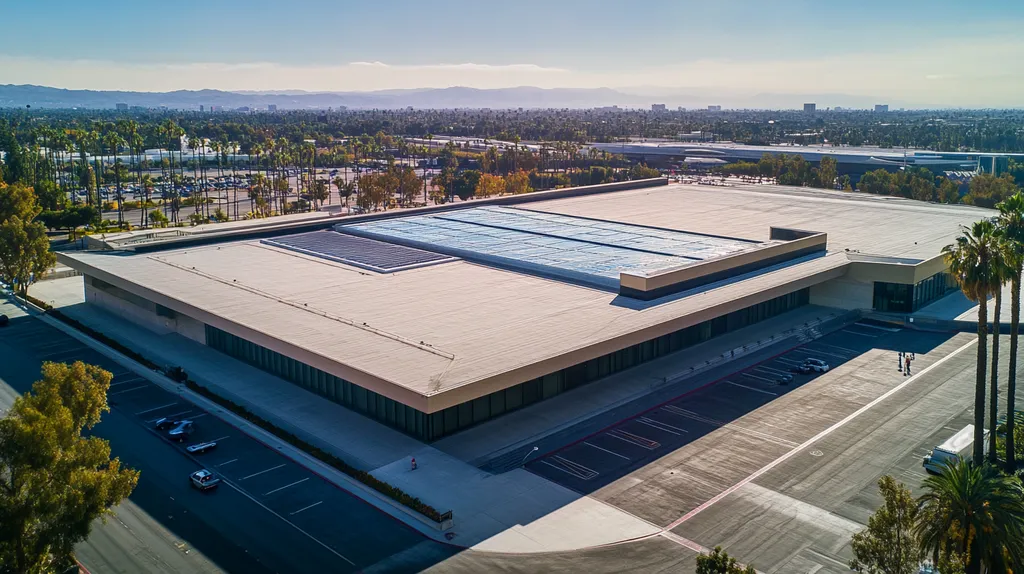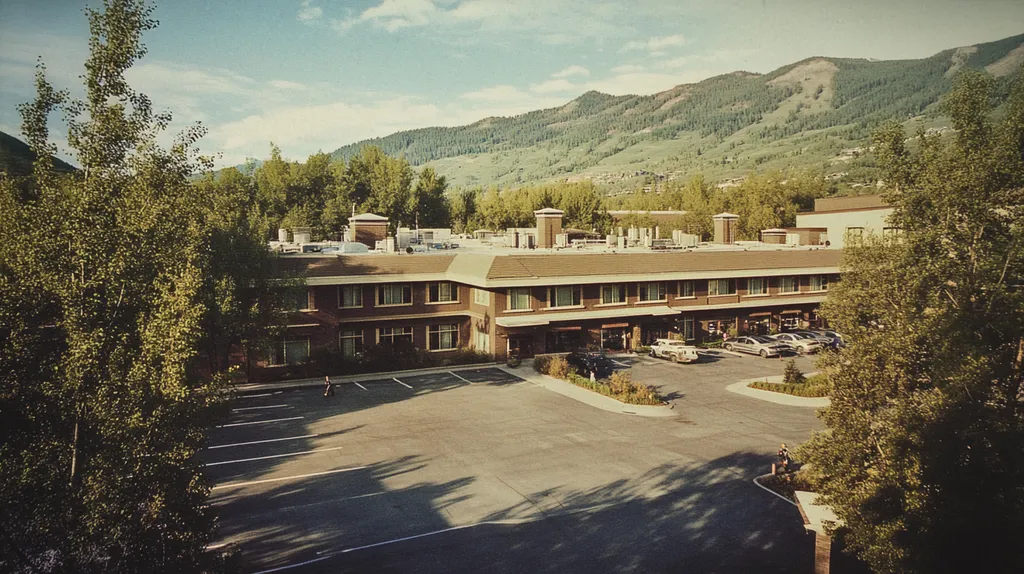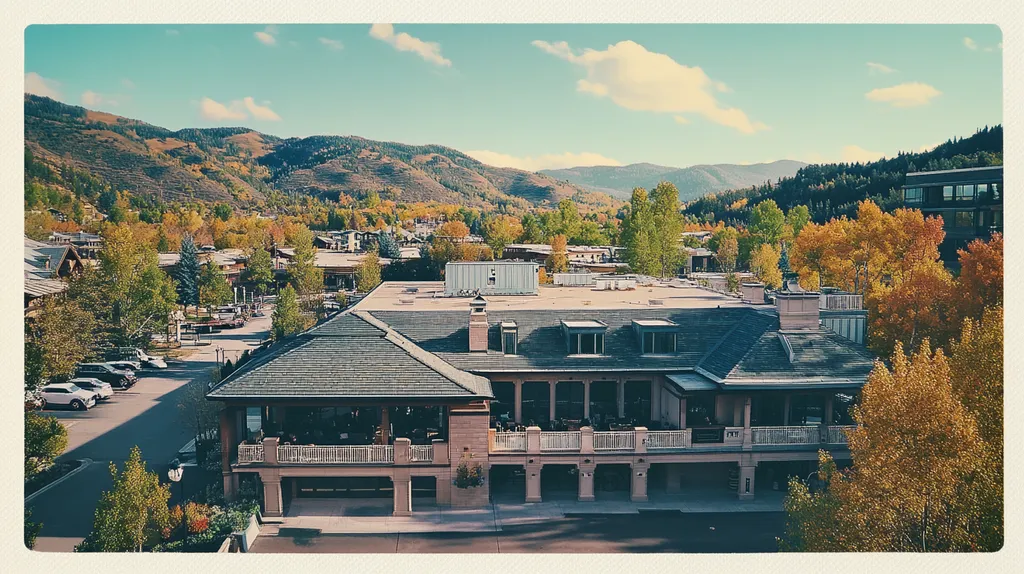In today’s competitive commercial real estate market, over 65% of potential tenants cite building aesthetics as a key factor in their leasing decisions. A visually striking roof can increase property values by up to 15% while enhancing overall curb appeal.
Yet many property owners overlook crucial factors when planning roofing improvements, leading to costly mistakes and diminished visual impact. From material selection to compliance requirements, a systematic approach is essential.
This comprehensive guide provides property professionals with actionable solutions for maximizing the visual appeal of commercial roofs while ensuring long-term performance and ROI.
SECTION 1: PERFORMANCE FACTORS
Commercial roofs are vital not only for protection but also for enhancing the visual appeal of a building. With over 70% of visible roof surface impacting overall attractiveness, property professionals must make deliberate roofing material choices. Understanding the performance factors of these materials can elevate both the building’s aesthetic value and its longevity, ultimately contributing to a better return on investment. This section highlights key considerations in selecting materials, ensuring durability, and improving energy efficiency.
Roofing Materials Selection
Selecting the appropriate roofing material is crucial for striking the right visual tone. Options like TPO, EPDM, and metal come with unique aesthetic benefits—metal roofs, for instance, provide a sleek and modern look, while traditional asphalt may seem outdated.
Incorporating materials suitable for green roofs can also enhance visual appeal. These roofs not only beautify the space but contribute to better insulation and reduced urban heat. However, they do require careful structural planning and regular maintenance.
Moreover, the color and texture of roofing materials greatly influence both aesthetics and energy usage. Lighter shades tend to reflect sunlight, helping maintain a cooler building temperature and instantly boosting curb appeal.
Key Action Items
Durability and Maintenance Needs
The longevity of roofing materials directly impacts their visual appeal. Some materials degrade quicker than others, leading to issues like leaks and discoloration. For instance, while a low-maintenance material may appear attractive initially, it could lose its luster under severe weather conditions.
Consistent maintenance is essential to prolong both the lifespan and appearance of a roof; neglect can result in expense and diminished attractiveness. For example, a commercial property that suffers from frequent leaks may develop unsightly stains, which can turn away potential clients.
Investing in highly durable materials can reduce future maintenance hassles. High-quality metal roofs may require a greater initial investment but are likely to lower long-term repair costs and maintain their visual appeal over time.
Key Action Items
Energy Efficiency Impact
Energy efficiency is critical for both aesthetic and financial outcomes. A roof’s ability to manage heat directly correlates with a building’s energy usage. Commercial roofs that reflect sunlight can significantly reduce cooling costs, creating a more inviting atmosphere.
Additionally, energy-efficient roofs are key in promoting sustainability, which appeals to eco-conscious tenants. Implementing cool roofing technologies can reduce surface temperatures and prolong roof life while maintaining aesthetic integrity.
Incorporating features like solar panels or reflective coatings can double as eye-catching design elements, while simultaneously slashing energy costs. Such upgrades position a standard roof as a striking asset that showcases both innovation and environmental responsibility.
Key Action Items
SECTION 2: FINANCIAL CONSIDERATIONS
The financial factors involved in enhancing the visual appeal of commercial roofs are paramount for property owners and managers. Overlooking these costs can lead to unexpected expenses and ultimately impact profitability. By making informed investments in aesthetics today, property managers can reduce future repair bills and boost overall property value. A solid grasp of initial costs, maintenance expenses, and return on investment is key to navigating these decisions effectively.
Initial Installation Costs
The initial expenses associated with roofing enhancements can differ widely based on chosen materials and design elements. While premium materials like metal or specialized membranes may incur a higher upfront cost, they typically offer significant long-term advantages. Additionally, investing in energy-efficient solutions, such as reflective coatings, may slightly increase initial outlay, but lead to notable energy savings in the long run.
Contractors may present varying quotes for aesthetic upgrades, emphasizing the importance of careful evaluation. Selecting an option solely based on cost could lead to inferior materials and escalating maintenance costs.
It is also essential to budget for site preparation and any potential disruptions to regular operations during installation. Proactive planning involves understanding these factors to ensure a smoother installation process and increased satisfaction post-project.
Key Action Items
Long-Term Maintenance Expenses
Post-installation, ongoing maintenance becomes a crucial financial aspect. Aesthetic enhancements to roofs often require specific upkeep to maintain both their beauty and functionality. Regular inspections, cleaning, and necessary repairs can accumulate significant costs if not planned for appropriately.
For example, a visually stunning green roof may demand special maintenance that standard roofs do not require. These extra responsibilities can inflate ongoing costs, making comprehensive financial forecasting essential for property owners. Sticking to a maintenance schedule minimizes the risk of detrimental long-term impacts on the roof’s appearance and performance.
Neglecting timely upkeep could lead to severe issues like leaks or structural degradation, resulting in expensive repairs. Setting aside a dedicated maintenance fund can help absorb unforeseen costs and sustain the visual appeal of the roof.
Key Action Items
Return on Investment Analysis
Performing a return on investment (ROI) analysis is vital for assessing the financial benefits of aesthetic roof enhancements. Improvements can significantly impact property values, attracting tenants willing to pay higher rents. Studies indicate that properties with attractive roofs may see a market value increase of 10-15% due to enhanced curb appeal.
When calculating ROI, one must consider both direct and indirect benefits. Direct advantages include higher rental income and reduced vacancy rates; indirect benefits, meanwhile, might involve an enhanced corporate image and improved staff morale, which can lower turnover costs.
A comprehensive ROI analysis enables property owners to evaluate if investing in aesthetics aligns with their financial objectives. Comparing projected revenue increases against the initial and ongoing expenditures provides actionable insights for decision-making.
Key Action Items
SECTION 3: COMPLIANCE REQUIREMENTS
For property owners and facility managers, grasping compliance requirements is essential for roofing project success. Non-compliance with local building codes, environmental regulations, or accessibility standards can lead to serious consequences, including penalties, legal issues, and costly project delays. As sustainable roofing solutions gain traction, navigating these complexities has become more critical than ever.
Local Building Codes
Local building codes outline mandatory requirements for roofing materials, designs, and installation protocols. These regulations ensure that roofs endure local weather conditions and comply with architectural standards. Adhering to these codes is often necessary for obtaining permits and passing inspections.
For example, regions vulnerable to severe storms may necessitate the use of materials that can endure high winds. Non-compliance not only risks performance failure but can also result in hefty financial penalties.
Property managers should thoroughly familiarize themselves with local codes before initiating any roofing work. Consulting local authorities or qualified roofing contractors can offer essential guidance.
Key Action Items
Environmental Regulations
Environmental regulations increasingly influence roofing projects due to heightened focus on sustainability. These regulations typically outline restrictions on materials and require the adoption of eco-friendly practices. Compliance enhances both legal standing and the visual appeal of the property.
For instance, some jurisdictions mandate the use of energy-efficient roofing materials that reflect sunlight. These choices not only lower energy costs but may also qualify property owners for financial incentives.
Failing to comply with environmental standards can lead to significant penalties or the need for expensive renovations, making proactive research and investment in compliant options essential for property owners.
Staying ahead of environmental regulations can significantly boost marketability by demonstrating a commitment to sustainability, appealing to environmentally conscious tenants and clients.
Key Action Items
Accessibility Standards
Accessibility standards, like those specified by the Americans with Disabilities Act (ADA), are critical during roofing projects, particularly for commercial buildings. They ensure that all occupants can safely access all areas of the property, including roofs used for recreational or mechanical purposes.
Key compliance factors include roof access points, safety railings, and pathways. Missing any accessibility element can lead to legal vulnerabilities and damage to the property’s reputation.
Designing an accessible roof not only fulfills legal obligations but also broadens appeal, attracting diverse tenants who appreciate inclusive spaces. Collaborating with design and roofing teams early in the planning process is essential to seamlessly incorporate accessibility features.
Key Action Items
SECTION 4: RISK MANAGEMENT
Effective risk management is crucial for property professionals looking to enhance the visual appeal of commercial roofs. Neglecting potential roofing hazards can lead to significant financial setbacks and compromise both aesthetics and functionality. Research indicates that 30% of roofing issues stem from inadequate initial assessments, highlighting the need for vigilant risk analysis. Identifying and mitigating these risks can help protect the integrity of the property while maintaining its visual charm.
Assessing Roofing Hazards
Identifying potential hazards is the cornerstone of successful risk management. Common risks include structural weaknesses, insufficient drainage, and debris accumulation, each of which can significantly impair the roof’s appearance and durability.
Regular roof inspections are essential for early detection of issues. A professional assessment should focus on critical areas like seams, flashing, and insulation quality to ensure they remain intact.
Property owners should choose materials wisely, as some are more susceptible to UV damage or temperature fluctuations. Selecting durable, weather-resistant options can substantially lower risk. Additionally, maintaining clear access to the roof is necessary to facilitate easy inspections and maintenance.
Key Action Items
Mitigating Weather Risks
Weather-related risks are among the most significant threats to the integrity and appearance of commercial roofs. High winds, heavy rainfall, and extreme temperatures can lead to substantial damage if not managed effectively. Understanding local climate patterns is key to preparing for potential weather challenges.
Incorporating modern roofing materials can greatly reduce these risks. For example, reflective roofing materials can minimize heat absorption, enhance energy efficiency, and prevent thermal stress. Additionally, effective drainage systems can help prevent water pooling and leaks.
Seasonal maintenance plays a critical role in this process. Regularly clearing gutters and downspouts of debris prevents water backflow, particularly during winter, potentially avoiding serious issues like ice dams. Investing in weather monitoring systems can provide early warnings for severe conditions, enabling timely protection strategies.
Key Action Items
Insurance Coverage Considerations
Having adequate insurance coverage is a vital component of risk management for commercial roofs. Property owners must ensure they’re protected against potential damage or necessary repairs, understanding policy exclusions and limits that may affect roofing issues.
Consulting with an insurance expert can help decode complex policy details. Owners should evaluate coverage options for damage resulting from natural disasters, vandalism, and general wear-and-tear.
Furthermore, maintaining thorough documentation of the roof’s condition is invaluable for insurance claims. High-quality photographs and detailed inspection reports can serve as crucial evidence should damage occur. Considering warranty options from material manufacturers during installation also provides a safety net for future repairs.
Key Action Items
SECTION 5: OPERATIONAL PROCEDURES
Maintaining the aesthetics and functionality of commercial roofs requires effective operational procedures. Implementing routine roof inspections can catch issues early, avoiding costly repairs down the line. Statistically, roofs that receive regular maintenance can last 20-30% longer than those that are neglected. Prioritizing maintenance schedules and establishing clear procedures for repairs and replacements are essential for enhancing both visual appeal and structural integrity.
Roof Inspection Protocols
Regular roof inspections are essential for discovering problems that could affect visual appeal. Property managers should conduct these inspections at least twice a year, ideally during spring and fall. A detailed checklist should guide the process, ensuring that damaged materials, standing water, and debris are identified and addressed.
Inspections should also focus on aesthetic aspects, like membrane discoloration or algae growth. Detecting these issues early can prevent further damage and costly fixes. For example, routine inspections may identify areas needing cleaning or restoration, thereby preserving the property’s overall look.
Involving qualified roofing professionals can improve assessment accuracy, as they have specialized tools to uncover hidden damage. Documenting each inspection helps track the roof’s condition over time and creates a historical record for future evaluations.
Key Action Items
Maintenance Scheduling Strategies
A proactive maintenance schedule is key for maintaining the visual appeal of commercial roofs. Property managers should create a calendar outlining essential tasks, including routine cleanings, debris removal, and inspections. Regular upkeep not only enhances appearances but also prevents deterioration over time.
Using seasonal strategies can optimize maintenance efforts. For instance, pre-winter tasks may involve clearing gutters to prevent ice buildup, while summer maintenance might focus on repairs and cleaning to prepare for harsher conditions.
Technology can aid in maintenance management by automating reminders for tasks and allowing documentation of completed work. An organized approach to maintenance showcases a commitment to quality that resonates with tenants and enhances property value.
Key Action Items
Repair and Replacement Procedures
Establishing clear procedures for repairs and replacements is vital for sustaining a roof’s visual appeal and structural integrity. Recognizing when repairs are insufficient and replacement is necessary can save both time and resources. Property managers must be prepared to critically evaluate repair options and understand indicators for full replacement.
When conducting repairs, following industry standards and using materials that match the existing roof aesthetics is crucial. Choosing mismatched colors or types can negatively affect the building’s visual coherence, which is essential for property value.
Working with reputable contractors ensures expert execution of both repairs and replacements. Engaging specialists in commercial roofing can lead to better workmanship and materials that meet aesthetic goals. A competitive bidding process fosters quality outcomes while controlling costs.
Key Action Items
SECTION 5: OPERATIONAL PROCEDURES
Effective operational procedures play a critical role in preserving the aesthetics and functionality of commercial roofs. By implementing regular roof inspections, property professionals can identify issues before they escalate into costly repairs. Research indicates that roofs receiving consistent maintenance endure 20-30% longer than neglected ones. Establishing a proactive maintenance schedule and clear procedures for repairs and replacements is essential for enhancing both the visual appeal and structural integrity of commercial properties.
Roof Inspection Protocols
Regular roof inspections are vital to spot potential issues that may compromise aesthetic appeal. Property managers should schedule inspections at least twice a year, ideally during the spring and fall. A comprehensive checklist is crucial for assessing conditions such as material damage, standing water, and accumulated debris.
Inspections should also address aesthetic elements like membrane discoloration and algae growth. Early detection can preempt more extensive damage and costly repairs. For instance, routine inspections can uncover areas needing cleaning or restoration, preserving the overall visual integrity of the property.
Engaging qualified roofing professionals during these assessments can enhance the accuracy of findings. They possess specialized tools to identify hidden damages, ensuring thorough evaluations. Documentation of inspections helps track the roof’s condition over time and serves as a historical reference for future assessments.
Key Action Items
Maintenance Scheduling Strategies
A proactive maintenance schedule is key to preserving the visual appeal of commercial roofs. Property managers should develop a calendar that outlines essential tasks, including routine cleanings, debris removal, and inspections. Consistent upkeep not only enhances appearances but also prevents deterioration over time.
Seasonal maintenance strategies can optimize these tasks. For instance, pre-winter preparations might include gutter clearance to avert ice buildup, while summer maintenance should focus on repairs and cleaning to ensure readiness for extreme conditions.
Adopting technology, such as maintenance management software, can further streamline the process. This system can automate task reminders and allow for documentation of completed work. Effective maintenance scheduling enhances aesthetics, prolongs roof lifespan, and yields a greater return on investment.
Key Action Items
Repair and Replacement Procedures
Clearly defined procedures for repairs and replacements are vital to sustaining a roof’s visual appeal and structural integrity. Identifying when repairs are insufficient and replacement is necessary can save considerable time and resources. Property managers need to evaluate repair options critically and recognize signs indicating the need for replacement.
When initiating repairs, it is essential to adhere to industry standards and choose materials that match the existing roof’s aesthetics. Selecting mismatched colors or types can detract from the building’s overall appearance, compromising visual coherence and property value.
Moreover, procuring reputable contractors is crucial for expert execution of repairs and replacements. Engaging specialists in commercial roofing enhances workmanship and the compatibility of materials with aesthetic goals. A competitive bidding process promotes quality outcomes while managing costs effectively.
Key Action Items
The Bottom Line
With 65% of commercial tenants citing building aesthetics as a key factor in leasing decisions, the visual appeal of commercial roofs has never been more critical to property value and marketability.
Property professionals who implement comprehensive roofing strategies – from material selection to maintenance protocols – can increase property values by up to 15% while reducing long-term costs.
Success requires a systematic approach across five key areas: performance factors, financial planning, compliance requirements, risk management, and operational procedures.
As sustainability demands and aesthetic expectations continue to rise, those who fail to enhance their commercial roofs risk diminished property values and increased vacancy rates.
The time to act is now – before aging roofs and outdated appearances impact the bottom line.
FREQUENTLY ASKED QUESTIONS
Q. How do performance factors impact the visual appeal of a commercial roof?
A. Performance factors, like roofing material selection, directly influence durability and aesthetics. By choosing materials that are both visually appealing and weather-resistant, property owners enhance the roof’s overall look while ensuring it withstands harsh conditions.
Q. What financial considerations should I keep in mind for my industrial roof?
A. Consider initial installation costs and long-term maintenance expenses when planning your budget. Investing in high-quality materials may incur a higher up-front cost but can save money on repairs and increase property value over time.
Q. Why are compliance requirements important for commercial roofs?
A. Compliance requirements ensure safety and legal adherence, preventing costly penalties or project delays. Familiarizing yourself with local codes helps guarantee that your roofing project meets all necessary standards and regulations.
Q. How can I manage risks associated with my commercial roof?
A. Conduct regular inspections to identify potential hazards, such as drainage issues or material defects. Taking preventative measures and addressing concerns proactively can minimize damage and preserve the roof’s appearance and function.
Q. What operational procedures are best for maintaining a commercial roof?
A. Establishing a maintenance schedule that includes routine inspections, cleanings, and prompt repairs will ensure your roof’s aesthetics and longevity. Utilizing technology can streamline this process and help keep track of maintenance tasks.
Q. What types of enhancements can improve a commercial roof’s visual appeal?
A. Consider adding elements like solar panels or green roofs, which not only enhance aesthetics but can also improve energy efficiency and sustainability. Creative design choices, such as color selection and textures, can also dramatically elevate visual appeal.
Q. How often should I inspect my commercial roof?
A. It’s recommended to inspect your commercial roof at least twice a year, ideally in spring and fall. Regular inspections help identify and address potential issues early, preserving the roof’s integrity and visual appeal.











